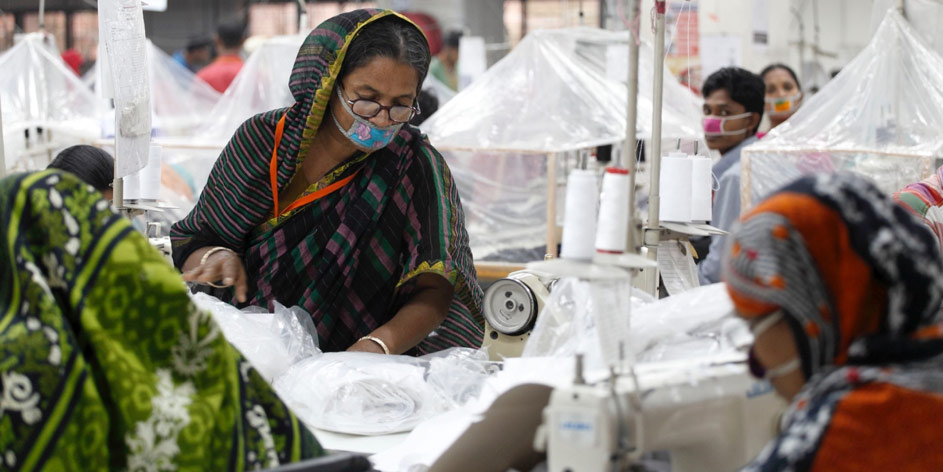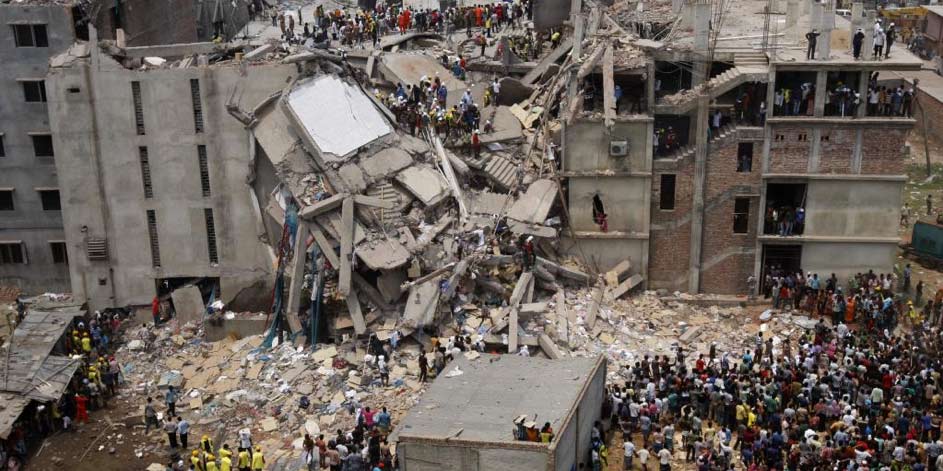Table of contents
A long road to living wages
There is a long road to fair trade clothing. One in six people worldwide is employed in the clothing industry, 98% of whom do not earn a living wage. That means that more than a billion people are underpaid in the fashion sector. Fast fashion has set a standard for a low price per item of clothing. In order to continue to achieve this price, labor costs must be kept as low as possible in low-wage countries. Clothing brands often take this cost saving very literally and rely on the minimum wage in a production country.
The minimum monthly wage in Bangladesh is about €84. Although life in Bangladesh is cheaper than in the Netherlands, garment workers in Bangladesh earn far from a living wage. When we convert this amount, it comes down to €193. As a result of salaries far below the living wage, garment workers are forced to work overtime on a structural basis or to use child labour. The solution to this global problem lies with the clothing industry, governments, media and consumers. Awareness will be the first step towards a global change in this topic.
The working conditions
The main problems related to working conditions in the garment industry are as follows:
- Overtime
- Unsafe situations
- (Sexual) harassment
- Ban on trade unions
The problems are the rule rather than the exception in the mostly Asian production countries. As mentioned earlier, garment workers often have to work overtime to earn a living wage. In addition, the factories and sewing workshops in which they work are often unsafe. This problem is not tackled due to the lack of independent inspections. Transparency is subsequently lacking because the results of the inspection are not made public.

There is still a lot of inequality and intimidation in the workplace in the clothing industry. The vast majority of garment workers are women (85%) and they are regularly sexually harassed or end up in violent situations. This problem often cannot be expressed to trade unions. Factory owners regularly keep unions out of the factories or even use physical violence against union workers.
Although the above-named problems are not universal, they are still common. There are, however, various organizations such as the Fair Wear Foundation, which effectively fight against low wages and poor working conditions. If large groups of consumers also want to oppose fast fashion, fair fashion (also known as slow fashion) can increase to a large extent.
Nog niet de overstap gemaakt naar duurzame kleding? Geen zorgen! Wij willen jou graag helpen de eerste stap te zetten. Met onze eerlijke en duurzame basics maak je een positieve impact op mens en milieu! Samen veranderen we de kledingindustrie.
The tipping point: where are we now?
More than 1,100 textile workers were killed in the collapse of the Rana Plaza factory building in Bangladesh in 2013. Despite the earlier warnings and the cracks in the factory walls, the garment workers were forced to work on the day the building collapsed. If workers did not want to work, they were beaten with sticks by the management. The large number of deaths and the ease of prevention led to a worldwide commotion.
This massive disaster seemed to be a tipping point between ignorance and action. Shortly after the event, 200 global companies signed an agreement requiring them to only work with safe factories in Bangladesh. Now it’s over six years later and we’ve seen significant improvements overall. Mandatory safety requirements and inspections have been made for the factories, minimum wage laws have been introduced and hundreds of new unions have been formed. However, the situation in Bangladesh is still far from ideal, because the minimum wage is not a living wage and trade unionists are still oppressed.
Although the above improvements are only aimed at the disaster area, the global awareness of working conditions in developing countries has improved.

Certificates
In addition to the public interventions, the effectiveness of which is sometimes questionable, there are other bodies that act as a control body for fair trade clothing. The most reliable quality marks are themselves independently checked and have a clear sanctions policy. The quality marks are very effective because of their strict conditions. Examples of the most well-known labels for fair trade in the clothing industry are:
- Global Organic Textile Standard (GOTS)
- Fair Wear Foundation
- Bluesign
- Oeko-tex Standard 100
- Fair trade
- Better Cotton Initiative (BCI)
The quality marks that focus on the clothing industry often focus on the degree of sustainability in addition to fair trade. You can read more about these quality marks on our page about certifications.
Can we oblige fair trade clothing?
When we talk about obligation, we often refer to government legislation and regulations. Unfortunately, it is extremely difficult to offer a solution to the global problem through this form of obligation. We are dealing with a complex world politics where changes are slow.
However, there is much to gain from the social obligation that starts with ourselves, the consumer. Now that consumers are becoming increasingly aware and expect the clothing industry to produce fair trade clothing, clothing brands will have to listen to this. If the demand for fair clothing increases, the supply will increase. In this way we ourselves ensure an obligation of fair trade clothing.
Want to make a difference with your choice of clothing? Shop the fair and sustainable basics from Stricters.
